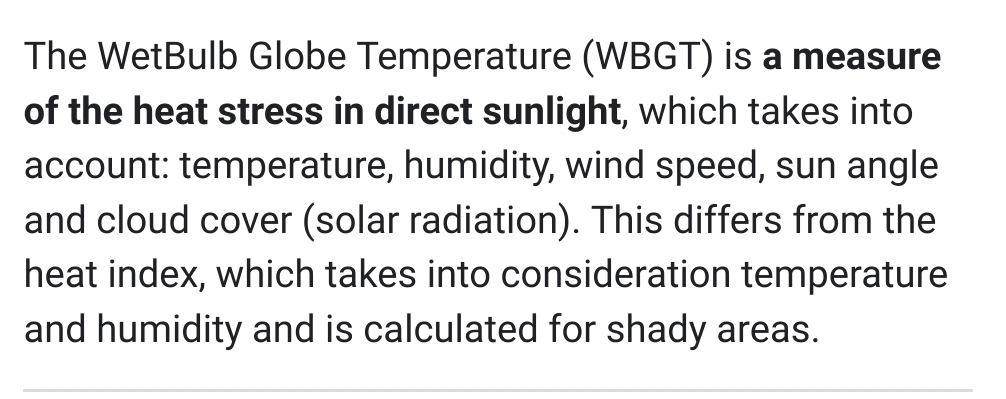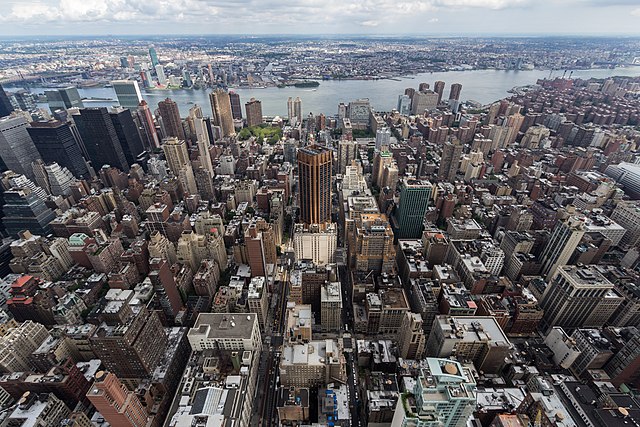Now this is the one that freaks me out. I was a spraytech in Florida this summer and reached a wet bulb temp of 87. It’s getting closer y’all.
“Wet bulb”? I’m not familiar with that term.
The wet bulb temperature, in a climate context, is a combination of temperature and humidity high enough that evaporative cooling no longer works.
In other words, above the wet bulb temperature, sweating makes you hotter, not cooler. Think sauna.
Which means if you’re outside without shelter and it’s above the wet bulb temperature, you overheat and die.
The meme is envisioning people crowding into cooling shelters as wet bulb temperatures become routine in big cities in the next decade or so.
The wet bulb temperature is a type of measurement, not a particular temperature cutoff.
While most of the temperature readings we normally encounter are “dry bulb” measurements (the thermometer is measuring the air temperature), the wet bulb temperature is measured by wrapping the thermometer in a damp cloth. If it is hot and dry, you will get a lower wet bulb reading than if it is hot and humid due to evaporative cooling happening more effectively when the air is dry. This can give us a more physiologically relevant temperature measure, since the human body also uses evaporative cooling, aka sweating.
There is still some debate on what the lower bound of the wet bulb danger zone is, how this number changes depending on regional factors (physiology is complicated, and humid vs dry heat is not the full story), the “standard” levels of activity to use when providing guidance, etc.
I googled it for you fam

to add on to OP’s reply, we just had an article shared a couple days ago – looks like health risks from wet bulb temperatures can set in as low as 88°F / 31°C



